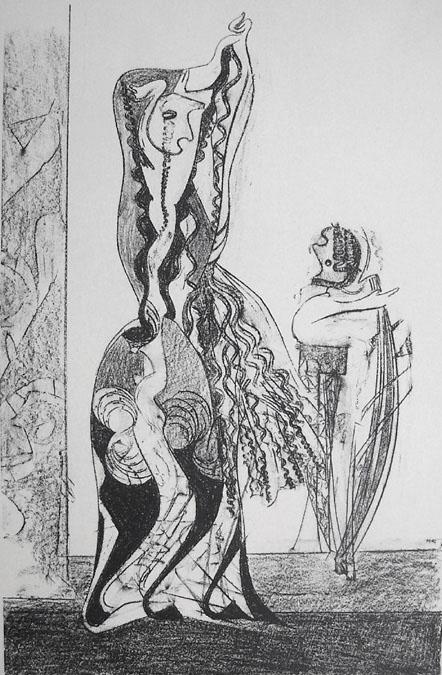CURATOR Werner Spies ORGANISER Exhibitour SPONSOR Goethe-Institut OTHER VENUES Auckland Art Gallery, 18 May–2 July 1994; Waikato Museum, Hamilton, 13 July–27 August 1994; Robert McDougall Art Gallery, Christchurch, 28 March–12 May 1995; Dunedin Public Art Gallery, 23 May–15 July 1995
Max Ernst: A Surrealist Eye encompasses the range of Ernst's graphic works, including many of his most influential images. This touring show features 196 framed works including prints, rubbings, collages, photograms, and lithographs, plus twenty-six books written or illustrated by Ernst. Many of Ernst's graphics were made for book collaborations with poets like Paul Eluard.
Born in Germany in 1891, Max Ernst has no formal art training, yet produces his first painting at the age of fourteen. The catalyst for this is a night of crisis after his youngest sister is born and his pet bird dies. The search for the symbolic meaning between seemingly unrelated images will form the basis of much of his work.
After serving as an artillery engineer in World War I, he writes, 'Max Ernst died on 1 August 1914. He returned to life on 11 November 1918, a young man who wanted to become a magician and find the central myth of his age.’ He became one of the most significant artists of the twentieth century.
Ernst founds the Cologne dada group. He moves to Paris in the 1930s, to become a founder of surrealism. His major contributions to surrealism are in collage and frottage (drawings made from rubbings), techniques devised to bypass rational processes.
Ernst escapes to New York in 1941 after the Nazis label his works ‘degenerate'. He has his first solo exhibition in America in 1932 and is in the exhibition of Dada and Surrealist Art at New York’s Museum of Modern Art in 1937. He becomes an American citizen in 1948. In 1953, he returns to Paris, where he dies in 1976.
The show includes the Peter Schamoni 1991 documentary, My Vagabondage, My Restlessness, which features extensive interviews with Ernst.
In Sunday Star-Times, Keith Stewart writes, 'Naked women in the clutches of men with bird heads and other acts of bestiality flicker across the paper of Max Ernst's prints … these are images intentionally printed on the cheap, using contemporary quick-fire technology to spread the artist's ideas as wide as possible. That was in the days before the photocopier and the fax …’ In the Evening Post, James Mack is effusive, calling the show a ‘knockout’, and ‘the most important exhibition by a twentieth-century master to have toured New Zealand’.


















































